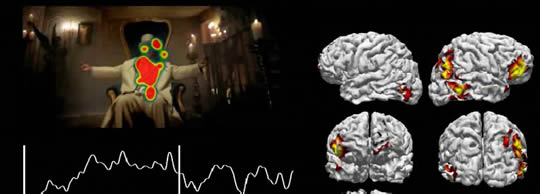2013 Super Bowl Winners & Brain Movies

Sands Research has released their 2013 Super Bowl winners and losers, along with the “brain movies” to show how each ad lit up viewers’ brains. For the first time that I can remember, the top spot was a tie – Coca-Cola “Security Camera” (Wieden + Kennedy) and Budweiser’s “Clydesdale” (Anomaly) finished in a dead heat. Rounding out the top five were Bud Light “Journey,” Kia Sorento “Space Babies,” and Taco Bell “Viva Young.”
Genetics Counts?
An interesting sidebar is that this year’s co-winner was directed by Jake Scott, son of famed director Ridley Scott. While the elder Scott is best known for films like Bladerunner and Gladiator, he also directed the iconic Apple “1984” commercial. The younger Scott actually played a part in the famous Mac spot. In an interview with AdAge, he says, “I was a runner at the time at the [RSA] office in London and they sent me down to an area in east London and shot all the skinheads they used as the worker force.” Who knew?
The Winners
What follow are the top-rated ads. I suggest watching the original version first, then the “brain movie” version – there’s a lot going on in the latter versions, and I think it’s better to experience the ad in its pure form first.
Tied for the #1 spot was “The Clydesdales – Brotherhood” ad for Budweiser. This is the original version:
Click HERE for the “brain movie” version that shows viewer attention in heat map format, brain wave activity captured by EEG, and graphs for engagement (top chart) and emotion (bottom chart).
The other #1 scoring ad was “Security Cameras” for CocaCola:
For the Sands version enhanced with the various neuro-metrics, click here.
Third place went to Bud Light’s “Journey” ad:
Brain movie version.
Fourth was Kia’s “Space Babies:”
Brain movie version.
Fifth was Taco Bell’s “Viva Young:”
Brain movie version.
Where’s The Product?
All of these ads focus on telling a story of some kind, and the product is often not seen until the end. None of them take a “features and benefits” approach, and all are long on emotion.
For the full picture of how the ads scored, see Neuromarketing Study Results of the Super Bowl XLVII Ads.
What do you think – any surprises? Do you think these ads will sell product, or at least help build the brand’s identity?
